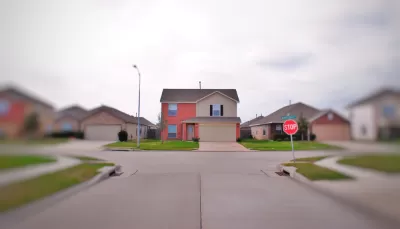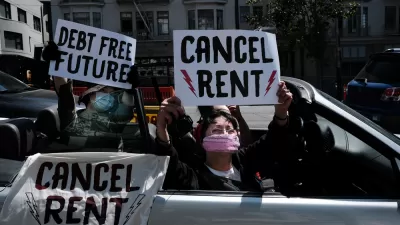Overcrowding and housing insecurity among Black and Brown communities led to disproportionately high COVID-19 fatalities, research shows.

Data from the Kinder Institute for Urban Research's 2021 State of Housing report "suggest a reason for the racial/ethnic differences in who COVID-19 killed," reports Stephen Averill Sherman. That reason: overcrowded housing. "[A]s scientists built knowledge of COVID-19’s spread, they learned that one needed more than a quick on-the-sidewalk encounter with an infected person to catch the disease. One needed to spend extended periods of time indoors with someone harboring the virus."
According to research from New York University's Furman Center, "it wasn’t necessarily population density but housing crowding that accelerated the virus’s contagion." Housing insecurity exacerbated by the pandemic increased overcrowding at the worst possible time. "[I]n Harris County, Hispanic-headed households are about 10 times more likely to be overcrowded than white non-Hispanic-headed households (10.9% vs. 1.2%). Black- and Asian-headed households are in the middle (4.3% and 4.9%, respectively). Hispanic Houstonians were also the ethnic/racial group with the most outsized death share from COVID-19."
Additionally,
[t]he types of jobs with high COVID-19 fatalities—construction, food preparation, health care support—are often done by Black and Brown Houstonians. The most recent ACS data show that working-age Black Harris County residents fill 48% of health care support positions despite being 20% of the population. Per 2018 Census department data quoted in a Houston Chronicle story, Hispanic Harris County residents represent 50% of its food service workers and 81% of its construction workers.
Sherman argues that the disproportionate rate of COVID-19 deaths in Houston's low-income households could have been reduced by more effective use of resources such as expanded unemployment benefits, more robust rental assistance, and hotel rooms where those diagnosed with COVID-19 could safely quarantine. "[O]ne lesson learned," Sherman writes, "is that while we share a lot of air with our coworkers and housemates, we are not all in this together."
FULL STORY: Houston had an overcrowding problem at precisely the wrong time: during a pandemic

Alabama: Trump Terminates Settlements for Black Communities Harmed By Raw Sewage
Trump deemed the landmark civil rights agreement “illegal DEI and environmental justice policy.”

Study: Maui’s Plan to Convert Vacation Rentals to Long-Term Housing Could Cause Nearly $1 Billion Economic Loss
The plan would reduce visitor accommodation by 25% resulting in 1,900 jobs lost.

Planetizen Federal Action Tracker
A weekly monitor of how Trump’s orders and actions are impacting planners and planning in America.

Wind Energy on the Rise Despite Federal Policy Reversal
The Trump administration is revoking federal support for renewable energy, but demand for new projects continues unabated.

Passengers Flock to Caltrain After Electrification
The new electric trains are running faster and more reliably, leading to strong ridership growth on the Bay Area rail system.

Texas Churches Rally Behind ‘Yes in God’s Back Yard’ Legislation
Religious leaders want the state to reduce zoning regulations to streamline leasing church-owned land to housing developers.
Urban Design for Planners 1: Software Tools
This six-course series explores essential urban design concepts using open source software and equips planners with the tools they need to participate fully in the urban design process.
Planning for Universal Design
Learn the tools for implementing Universal Design in planning regulations.
Caltrans
Smith Gee Studio
Institute for Housing and Urban Development Studies (IHS)
City of Grandview
Harvard GSD Executive Education
Toledo-Lucas County Plan Commissions
Salt Lake City
NYU Wagner Graduate School of Public Service





























